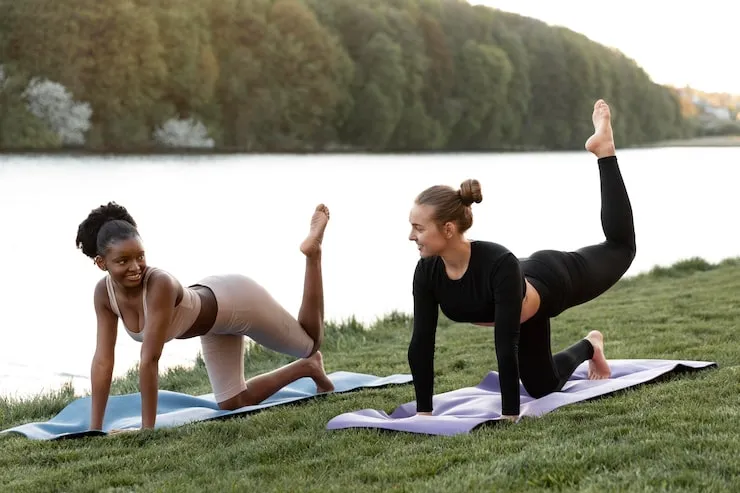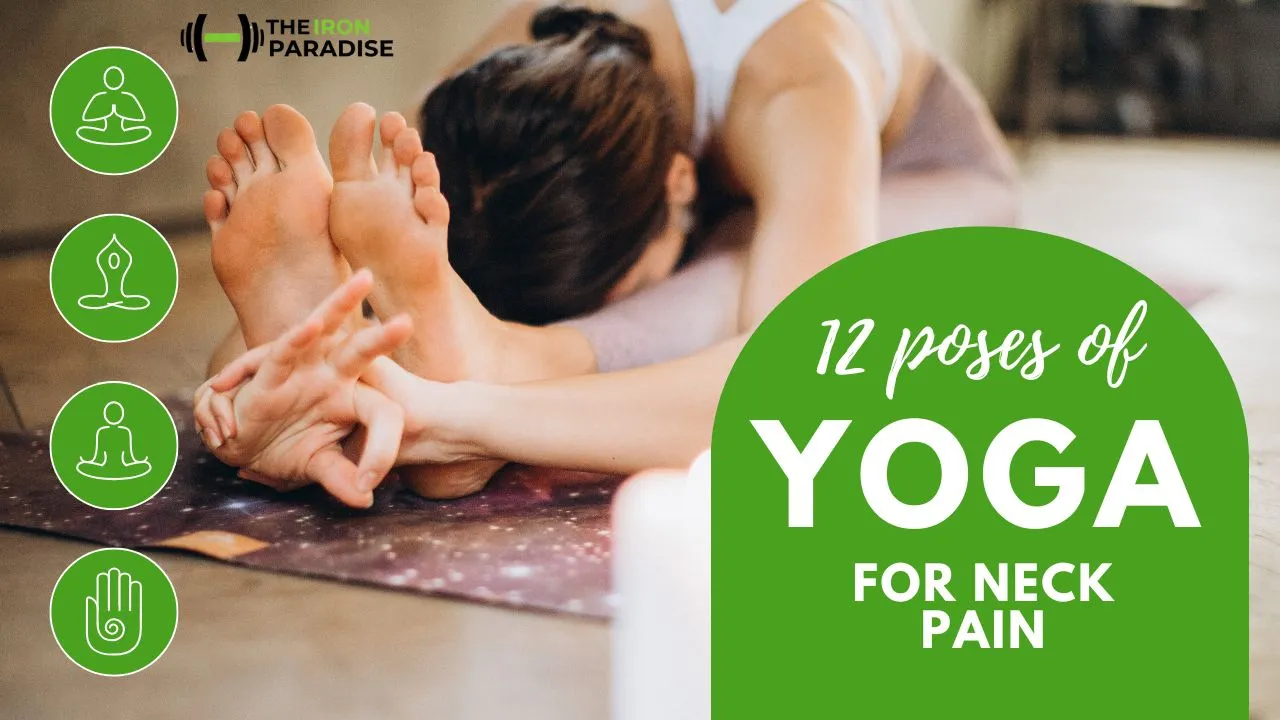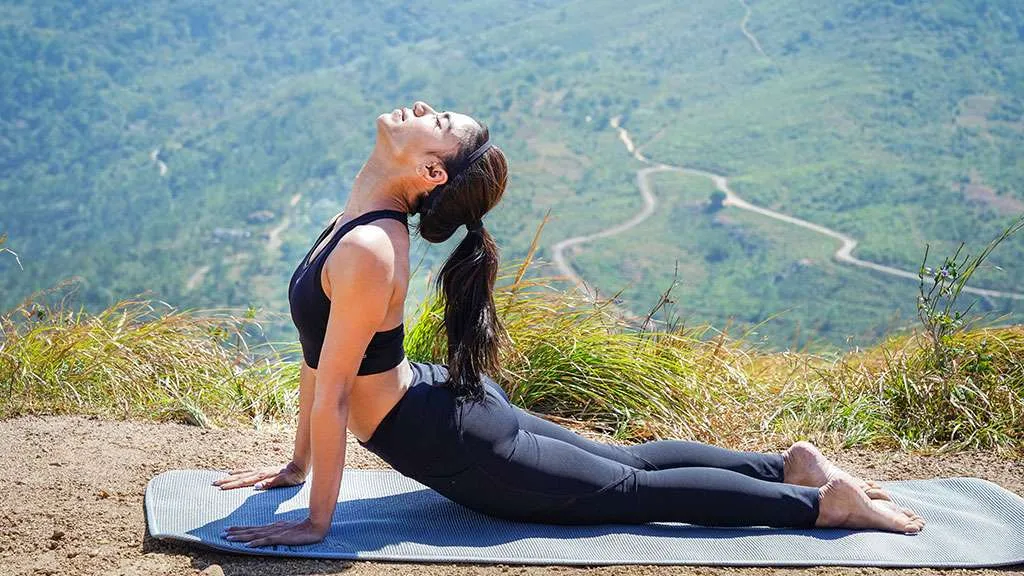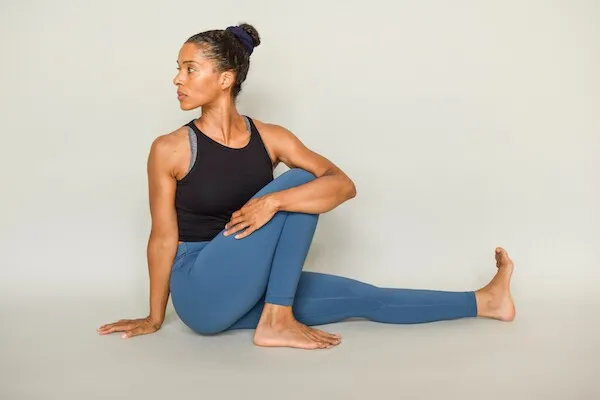
Beginning yoga can feel difficult at to begin with. You may not know what to do or how to begin. But don’t stress. Yoga can be exceptionally straightforward. You do not require to be adaptable or solid to start. All you require is a small time, a tangle or towel, and Easy Yoga Stretches for Beginners.
In this web journal, we will appear you a few simple yoga extends for fledglings. These postures will offer assistance you unwind your body, calm your intellect, and feel superior each day. You can do them at domestic, at school, or indeed outside.
Let’s start with a few supportive tips some time recently beginning the stretches.
Before You Begin: Yoga Tips for Beginners
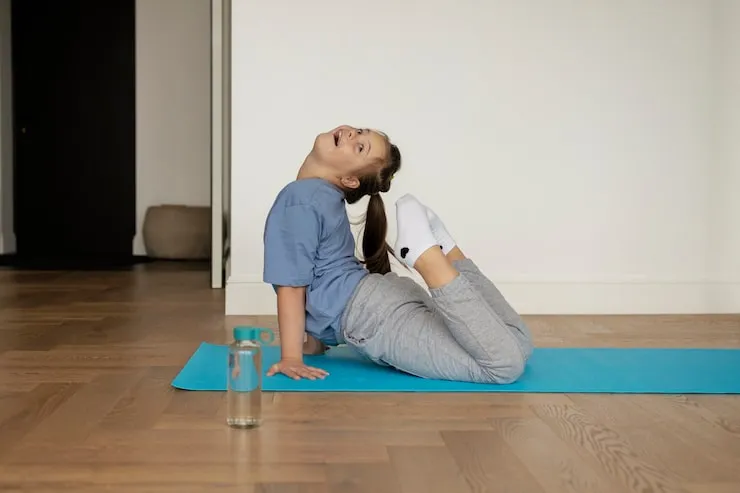
- If you are modern to yoga, take after these straightforward tips to remain secure and comfortable:
- Wear free and comfy clothes.
- Use a yoga tangle, towel, or delicate surface.
- Do not eat a overwhelming supper some time recently yoga.
- Breathe gradually and gently.
- Stop if you feel torment. Yoga ought to not hurt.
- Practice in a calm space.
- Drink water after your session.
Read Also: Are Yoga Poses Meant To Worship Gods? A Deeper Look
Benefits of Yoga Stretches
- Yoga is great for your body and intellect. Indeed straightforward extends can bring numerous benefits. Here are some:
- Helps your body feel relaxed
- Makes your muscles delicate and flexible
- Reduces body torment and stiffness
- Calms your considerations and diminishes stress
- Helps you rest better
- Improves your center and balance
Makes you feel cheerful and fresh
Now let’s see at the best yoga extends for beginners.
1. Child’s Posture (Balasana)
This posture makes a difference your back, hips, and shoulders relax.
How to do it:
Sit on your knees.
- Bend forward so your temple touches the floor.
- Stretch your arms in front or close to your body.
- Breathe gradually and remain for 5–10 breaths.
Benefits:
- Calms the mind
- Loosens the back and hips
- Good rest posture between other stretches
2. Cat-Cow Extend (Marjaryasana-Bitilasana)
- This is a delicate extend for your back and neck.
How to do it:
- Get on your hands and knees.
- As you breathe in, lift your head and drop your stomach (Bovine pose).
- As you breathe out, tuck your chin and circular your back (Cat pose).
- Repeat 5–10 times.
Benefits:
- Warms up the spine
- Eases back pain
- Helps with posture
3. Descending Puppy (Adho Mukha Svanasana)
This is one of the most common yoga postures. It extends your entire body.
How to do it:
- Start on hands and knees.
- Lift your hips up to make a V shape.
- Keep your hands level and feet on the floor.
- Stay for 5 breaths.
Benefits:
- Stretches the back, arms, and legs
- Builds strength
- Wakes up the body
4. Standing Forward Twist (Uttanasana)
This posture extends your back and legs. It moreover calms your mind.
How to do it:
- Stand up straight.
- Bend forward from your hips.
- Try to touch your toes or the floor.
- Let your head hang loose.
- Breathe gradually for 5 breaths.
Benefits:
- Stretches legs and Easy Yoga Stretches for Beginners
- Relieves stress
- Improves blood stream to the brain
5. Situated Forward Twist (Paschimottanasana)
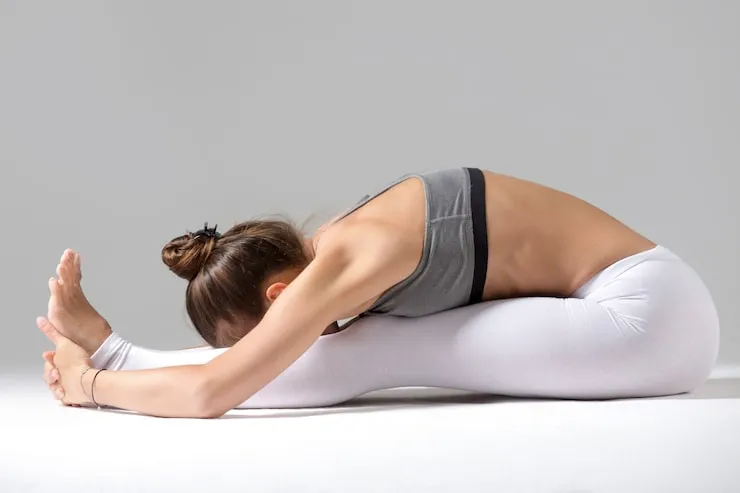
This extend is awesome for tight legs and a firm back.
How to do it:
- Sit on the floor with legs straight.
- Inhale and raise your arms.
- Exhale and reach forward to touch your feet.
- Keep your back straight.
- Hold for 5 breaths.
Benefits:
- Improves flexibility
- Soothes the mind
- Good for digestion
You May Also Like: How Does Yoga Strengthen Bones
6. Butterfly Posture (Baddha Konasana)
This posture opens your hips and unwinds your legs.
How to do it:
- Sit with your legs bowed and feet touching.
- Hold your feet with your hands.
- Let your knees drop to the sides.
- Sit tall and breathe for 5–10 breaths.
Benefits:
- Opens hips and thighs
- Improves posture
- Calms the brain
7. Legs Up the Divider (Viparita Karani)
This is a unwinding posture you can do at the conclusion of your yoga session.
How to do it:
- Lie on your back close a wall.
- Raise your legs up and rest them on the wall.
- Keep your arms by your side.
- Close your eyes and breathe deeply.
Benefits:
- Reduces push and tiredness
- Helps blood flow
- Soothes the anxious system
8. Carcass Posture (Savasana)
This is the last resting posture. It makes a difference your body and intellect unwind fully.
How to do it:
- Lie on your back.
- Let your arms and legs rest freely.
- Close your eyes and breathe slowly.
- Stay for 5–10 minutes.
Benefits:
- Deep rest for the body
- Helps with sleep
- Reduces uneasiness and stress
How Frequently Ought to You Do These Yoga Stretches?
If you are a tenderfoot, attempt to do yoga 3–4 times a week. Each session can be 10 to 30 minutes. You can begin with 3 or 4 extends and gradually include more as you get better.
Always tune in to your body. If something harms, halt and rest. Yoga is around feeling great, not doing difficult moves.
Easy Yoga Schedule for Apprentices (10–15 Minutes)
If you are not beyond any doubt how to begin, take after this basic routine:
- Child’s Posture – 1 minute
- Cat-Cow Extend – 1 minute
- Downward Canine – 1 minute
- Standing Forward Twist – 1 minute
- Butterfly Posture – 1 minute
- Seated Forward Twist – 1 minute
- Legs Up the Divider – 2 minutes
- Corpse Posture – 5 minutes
You can do this in the morning or some time recently rest to unwind your body and intellect.

